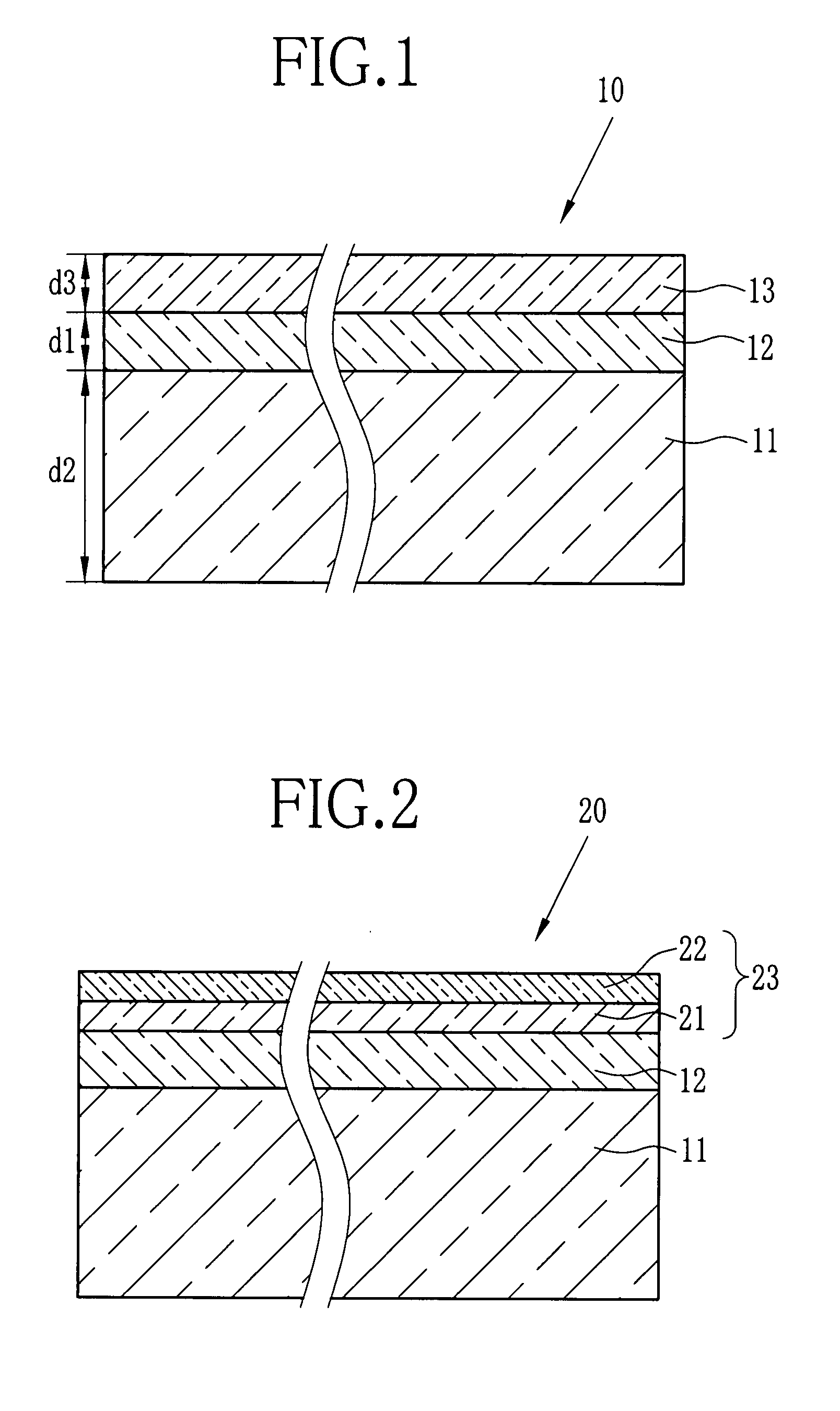Multi-layer film and image display device
a multi-layer film and image display technology, applied in the field of multi-layer film and image display devices, can solve the problems of difficult to enhance the adhesive strength to a predetermined level, difficult to prevent light reflection, and light leakage, and achieve excellent adhesive strength, prevent rainbow unevenness, and excellent rub resistance
- Summary
- Abstract
- Description
- Claims
- Application Information
AI Technical Summary
Benefits of technology
Problems solved by technology
Method used
Image
Examples
example 1
[0077]In this example, in accordance with the following procedure, the multi-layer film 10 shown in FIG. 1 was formed. Note that the second layer 13 has a single-layer structure composed of the hard coat layer 21 solely.
[0078][Base Material]
[0079]Polyethylene terephthalate (hereinafter referred to as PET) having inherent viscosity of 0.66 was synthesized by polycondensation reaction. The catalyst used in the reaction was antimony trioxide. The PET was dried until the water content thereof became less than 50 ppm, and thereafter melted in an extruder having a heater set at the temperature of 280 to 300° C. Next, the melted PET was discharged onto a chill roll to which electrostatic charge was applied from a die section, thus obtaining an amorphous film. Subsequently, the amorphous film was stretched 3.3 times in the longitudinal direction of the film, and further stretched 3.8 times in the width direction thereof, thus completing the biaxially stretching and producing the base materi...
example 2
[0090]A multi-layer film was formed in the same manner as example 1 except that zirconium oxide dispersion liquid was instead of the second fine particle dispersion liquid in the coating liquid A. The zirconium oxide dispersion liquid was zirconium oxide sol (product name: HZ-307W6, water solution with solid content of 20%, and produced by Nissan Chemical Industries, Ltd). The application amount of solid content was 189 (mg / m2). Furthermore, the thickness and refractive index of the first layer 12 corresponding to Example 2 were measured in the same manner as Example 1. The result was: η2=1.70 and d1=88 nm.
example 3
[0091]A multi-layer film was formed in the same manner as example 1 except that indium oxide dispersion liquid was used instead of the second fine particle dispersion liquid in the coating liquid A. The indium oxide dispersion liquid was EP ITO DL-1 (water solution with solid content of 20%, and produced by JEMCO INC.). The application amount of solid content was 170 (mg / m2). Furthermore, the thickness and refractive index of the first layer 12 corresponding to Example 3 were measured in the same manner as Example 1. The result was: η2=1.70 and d1=78 nm.
PUM
| Property | Measurement | Unit |
|---|---|---|
| refractive index η1 | aaaaa | aaaaa |
| thickness d1 | aaaaa | aaaaa |
| thickness d1 | aaaaa | aaaaa |
Abstract
Description
Claims
Application Information
 Login to View More
Login to View More - R&D
- Intellectual Property
- Life Sciences
- Materials
- Tech Scout
- Unparalleled Data Quality
- Higher Quality Content
- 60% Fewer Hallucinations
Browse by: Latest US Patents, China's latest patents, Technical Efficacy Thesaurus, Application Domain, Technology Topic, Popular Technical Reports.
© 2025 PatSnap. All rights reserved.Legal|Privacy policy|Modern Slavery Act Transparency Statement|Sitemap|About US| Contact US: help@patsnap.com


